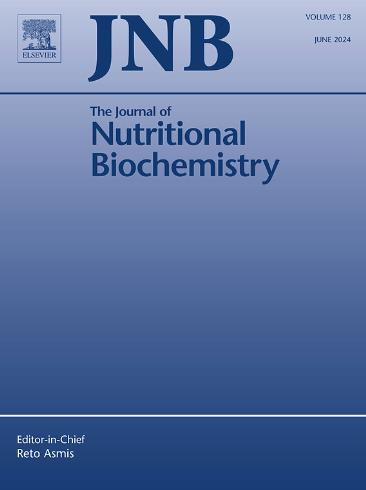Enriched environment exposure restores behavioral alterations and transcriptional dysregulation of hippocampal steroidogenic enzymes in a small litter model
IF 4.9
2区 医学
Q1 BIOCHEMISTRY & MOLECULAR BIOLOGY
引用次数: 0
Abstract
We previously reported that rats raised in small litters (SL) exhibited increased anxiety-like behavior and poor performance in the episodic-like memory (ELM) test compared to normal litters (NL). Additionally, mRNA expression of aromatase was increased, and 5α-reductase 1 was reduced in the dentate girus (DG) of SL compared to NL rats. In this work, the objective was to analyze whether environmental enrichment (EE) can reverse or attenuate the behavioral and molecular effects observed in SL animals. Thus, male rats were raised in SL (4 pups/mother; SL), where pups consumed larger amounts of milk and gained more body weight compared to rats raised in normal litters (10 pups/mother; NL). On postnatal day (PND) 21, male rats were housed under standard conditions (SE, 4 rats/cage) or EE (8 rats/cage). For EE, cages were equipped with objects and tunnels that were changed daily. At PND75, the animals underwent locomotion activity, episodic-like memory (ELM) and elevated plus maze (EPM) tests. At PND90, the animals were euthanized, and their brains were microdissected. dentate girus (DG), CA1, and CA3 regions were isolated for mRNA quantification and methylation studies. We found that EE attenuates anxiety-like behavior and rescues spatial memory deficits in SL animals. Furthermore, EE prevented the increase in aromatase and decline in 5α-reductase 1, expression associated with SL. Some of these changes were correlated with alterations in methylation patterns of the promoter regions of these genes. These findings demonstrate that environmental interventions can mitigate the long-term effects observed in the SL model and restore brain and behavioral functions.
在一个小窝模型中,丰富的环境暴露恢复海马甾体生成酶的行为改变和转录失调。
我们之前报道过,与正常窝(NL)相比,小窝(SL)饲养的大鼠表现出更多的焦虑样行为和较差的情景样记忆(ELM)测试表现。与NL大鼠相比,SL齿状龈(DG)中芳香化酶mRNA表达升高,5α-还原酶1表达降低。在这项工作中,目的是分析环境富集(EE)是否可以逆转或减弱在SL动物中观察到的行为和分子效应。因此,雄性大鼠以小窝饲养(每母4只幼鼠;与正常窝中饲养的大鼠相比(10只幼崽/母;问)。在产后第21天,将雄性大鼠饲养在标准条件下(SE, 4只/笼)或EE(8只/笼)。对于EE,笼子配备了每天更换的物体和隧道。在PND75时,动物进行运动活动、ELM和升高+迷宫(EPM)测试。在PND90时,对这些动物实施安乐死,并对它们的大脑进行显微解剖。分离DG、CA1和CA3区域进行mRNA定量和甲基化研究。我们发现情感表达减轻了SL动物的焦虑样行为并挽救了空间记忆缺陷。此外,EE抑制了与SL相关的芳香化酶的增加和5α-还原酶1的下降,其中一些变化与这些基因启动子区域甲基化模式的改变有关。这些发现表明,环境干预可以减轻SL模型中观察到的长期影响,并恢复大脑和行为功能。
本文章由计算机程序翻译,如有差异,请以英文原文为准。
求助全文
约1分钟内获得全文
求助全文
来源期刊

Journal of Nutritional Biochemistry
医学-生化与分子生物学
CiteScore
9.50
自引率
3.60%
发文量
237
审稿时长
68 days
期刊介绍:
Devoted to advancements in nutritional sciences, The Journal of Nutritional Biochemistry presents experimental nutrition research as it relates to: biochemistry, molecular biology, toxicology, or physiology.
Rigorous reviews by an international editorial board of distinguished scientists ensure publication of the most current and key research being conducted in nutrition at the cellular, animal and human level. In addition to its monthly features of critical reviews and research articles, The Journal of Nutritional Biochemistry also periodically publishes emerging issues, experimental methods, and other types of articles.
 求助内容:
求助内容: 应助结果提醒方式:
应助结果提醒方式:


